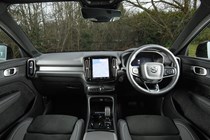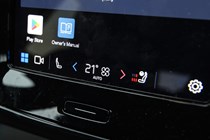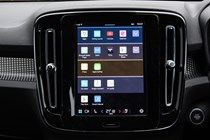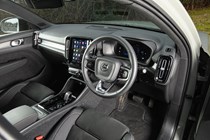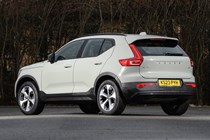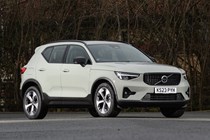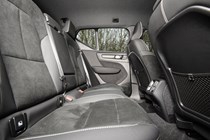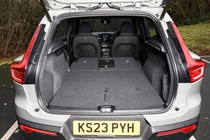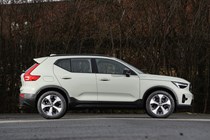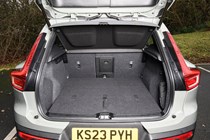
Volvo XC40 engines, drive and performance
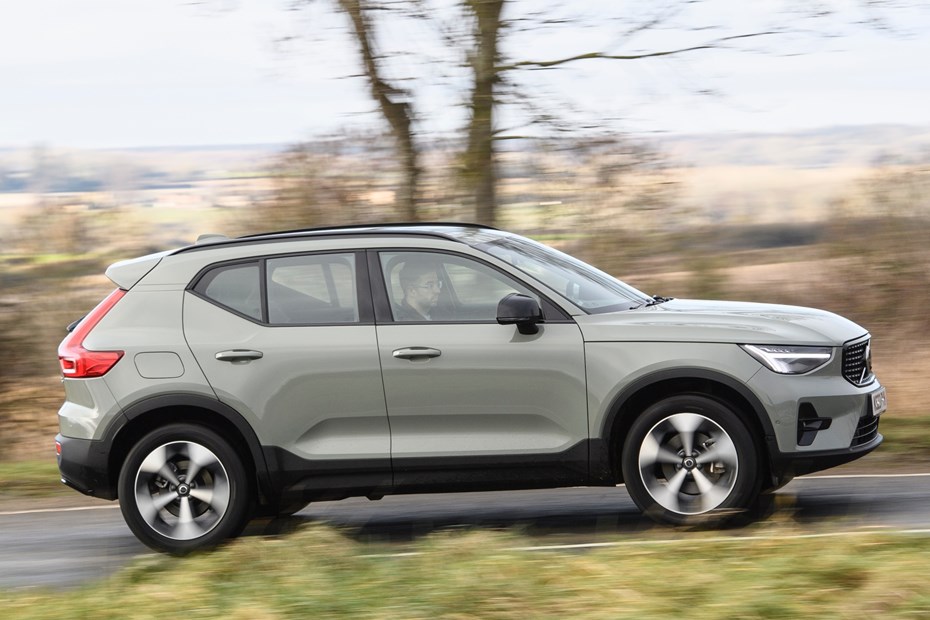
- Mild hybrid petrol engines only
- Two power outputs – 163 and 197hp
- Relaxed and refined to drive
Petrol engines
Volvo has trimmed down the XC40’s engine range massively over the years, ditching even the plug-in hybrids in 2023. Now, you have a choice of two mild-hybrid petrol engines, and the pure electric EX40 (formerly known as the XC40 Recharge) we review elsewhere on this site.
The mild-hybrid petrol engines are both based on the same turbocharged 2.0-litre four-cylinder unit. The cheapest B3 model produces 163hp and 265Nm of torque, which Volvo says is enough to get the XC40 from 0–62mph in 8.6 seconds. It feels plenty on the road given the XC40’s relaxed nature and you rarely want for more poke.
Above that, there’s the B4. This option produces 197hp and 300Nm of torque – and that extra grunt cuts the XC40’s 0–62mph time down to 7.6 seconds. You also get your towing capacity for a braked trailer upped from 1,600kg to 2,000kg. Both engines send drive to the front wheels via seven-speed automatic gearbox that’s smooth and inoffensive, if not particularly quick witted if you accelerate hard.
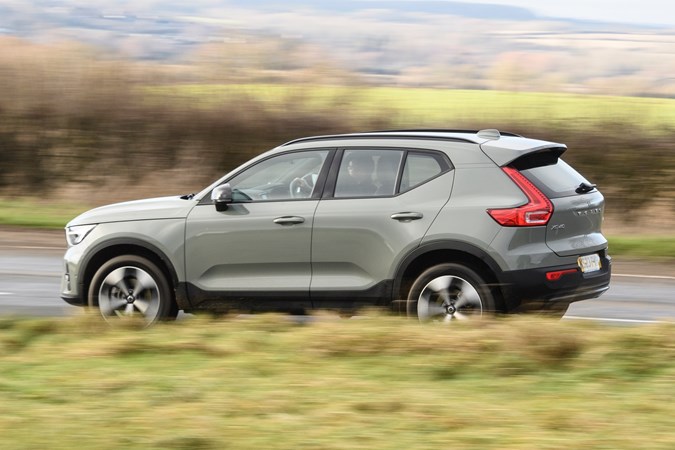
What’s it like to drive?
- Comfort-oriented suspension
- Safe, stable and predictable handling
- Capable, not particularly engaging to drive
Volvo champions safety above all else – and the XC40’s handling reflects this. It’s a predictable and stable car that doesn’t really like to be driven hard. The tyres aren’t as grippy as sportier rivals with the nose washing wide earlier than you might expect in the wet. You don’t have to push too hard to trigger the stability control, and there’s also a bit of body roll to put you off driving quickly, too.
The XC40 is at its happiest when cruising within the limits of its safety parameters. You can hustle it down a country lane if you want, but it won’t be a particularly enjoyable experience if you’re really hammering it. Even by the standards of the class, the steering is particularly mute giving no indication of when the front tyres are slipping wide. If you want fun, you’re better of with a BMW X1.
In his extended long-term test, our tester Adam Binnie said: ‘For the most part it’s classic Volvo – very safe and controlled but not the last word in involvement. There’s a bit of bodyroll but not so much that you feel like it’s lurching from corner to corner. Grip levels are high and that means it’s possible to hustle it down a B-road at quite a convincing pace, it’s just you’d be enjoying yourself more in something like a Mazda CX-5 or SEAT Ateca.’
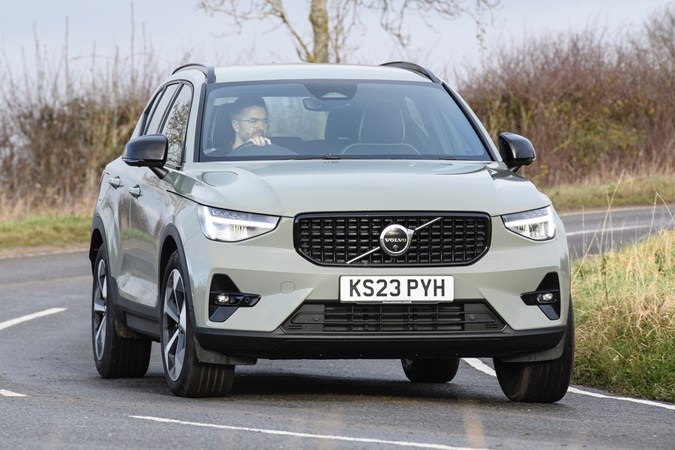
It’s refreshing that the Volvo XC40’s chassis is geared completely towards comfort, and it manages to remain refined on its large alloy wheels. The standard 18-inch wheels are great, but we were impressed how well isolated the cabin remains with Volvo’s optional 19-inch and 20-inch alloys. Volvo also tuned the XC40’s high-speed ride well, which makes the car an accomplished long-distance cruiser.
Adam added: ‘The suspension is surprisingly soft despite the big wheels, and doesn’t thump over obstacles or patches of broken tarmac. It’s not limo-like, square edged potholes and large speedbumps can catch it out, but generally it strikes a nice balance between body control and comfort. It’s particularly good on the motorway, too.’
Other small surface irregularities are noticeable when driving around town, although the jolt they produce isn’t enough to stop the XC40 from leading the class in ride quality. Impressively, it doesn’t wallow over undulations striking a good balance between control and comfort.








